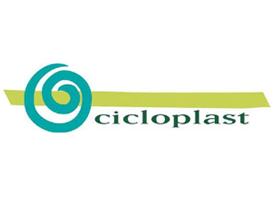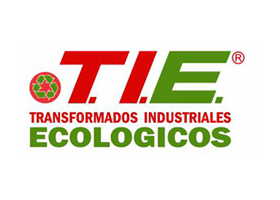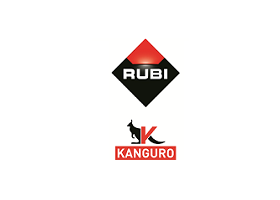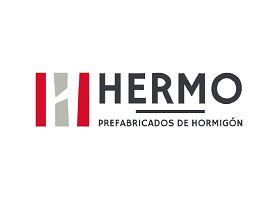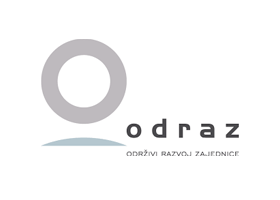In this section, you can access to the latest technical information related to the FUTURE project topic.
Emulsions play an important role in enhancing oil recovery during the reservoir flooding process. In order to reveal the profile control ability and the effect of adjustments to the interlayer interference during the migration of the emulsion in the porous media, a stable emulsion system and an alkali-surfactant-polymer (ASP) system were selected to simulate the underground emulsification process by verifying influencing factors of the emulsion. A parallel-core displacement experiment was used to investigate the oil displacement efficiency and the difference of fractional flow in each layer under different emulsification degrees and different permeability contrasts. The results indicate that the stability of the emulsion is related to the shearing strength, the water content, and the type and concentration of chemical system. The oil displacement efficiency of emulsion flooding is better than that of ASP flooding. For parallel core with an average permeability of 40?mD and a permeability contrast of 2, the emulsion flooding can enhance oil recovery by 21.16% compared to water flooding. With increasing permeability contrast, the oil recovery percent of emulsion flooding will further increase. The emulsion system has good profile control ability. Within a certain range, the stronger the heterogeneity of porous media, the better the effect of emulsification on the adjustment of the interlayer interference.
1. Introduction
The class III reservoir in the Sartu Oilfield is highly heterogeneous and shows serious interlayer interference [1], which greatly influence the development and recovery of the oil field. Statistics shows that about 80% of the world’s crude oil is produced in the form of emulsions [2, 3]. Emulsion is a thermodynamically unstable multiphase dispersion system in which small droplets of one liquid is dispersed in another immiscible liquid. It exhibits non-Newtonian characteristics during the flow process and has a wide range of applications in the petroleum industry [4–6]. Emulsified compound flooding could enlarge sweep volume of polymer and improve oil displacement efficiency. The proportion of emulsion system and related supporting technologies in stabilizing oil and controlling production in high water content oil fields is increasing. With increasing water content in oil reservoirs and complexity of water flooding, emulsion flooding has gradually become an important technology for water and polymer flooding. Emulsion flooding has great potential in oil recovery [7–9]. In recent years, some scholars have discovered that emulsification is the key factor to enhance oil recovery in ASP flooding. It is believed that the most important contribution of emulsification to oil displacement is emulsion carrying and emulsion profile control [10–12]. Emulsion carrying means that by reducing the interfacial tension, the stripped oil forms an O/W emulsion that is easy to flow. The improved oil displacement efficiency is by coalescence and forming an oil wall. The mechanism of profile control by emulsion is that the high-viscosity emulsion generated in the displacement process preferentially enters and plugs the high-permeability layer, followed by the middle- and low-permeability layers, thereby further expanding the sweep efficiency.
Emulsification process and mechanism are complex, usually accompanied by a series of problems such as flocculation, coalescence, and phase inversion, which are still at the exploratory stage. In recent years, there have been many studies on the stability mechanism and emulsion carrying process [13]. Yin et al. evaluated the stability of five emulsions with light crude oil from low-permeability reservoirs. The most significant indigenous components for the crude oil emulsion stability were explored. The stability mechanism was revealed by innovative in situ methods and the interfacial viscoelasticity was analyzed quantitatively to evaluate the contribution of adsorbed asphaltene at the interfacial film [14]. Romero analyzed the flow of emulsion in porous media by laboratory experiments and capillary models, respectively. They analyzed the flow characteristics of emulsions in two different permeability cores under the condition that the size distribution of emulsion droplets is known and established the relationship between pressure and flow rate. The capillary model analyzed the relationship between pressure and flow rate when the emulsion passes through the variable diameter capillary [15]. Lei et al. described the emulsion start and the emulsion carrying of ASP flooding by establishing the relationship between the number of trapping and the residual oil saturation. Finally, the effect of ASP flooding on recovery factor and sweep efficiency was evaluated by using heterogeneous positive rhythm profile geological model [16]. Lu et al. examined the performance of emulsions through VR concentration, WOR, salinity, and temperature on the basis of the optimum VR selected in the laboratory. Different steam/VR injection processes were conducted in sandpacks to study the effect of injection patterns, injection time, and salinity on the formation of emulsions and the incremental oil recovery [17]. The above studies reveal the seepage law and mechanism of the emulsion in the formation to some extent, but in-depth research on the profile control of emulsion and the adjustment on interlayer interference in the heterogeneous reservoir have not been studied much.
In this work, the influencing factors of emulsification are first investigated. According to the geological characteristics of the class III reservoir in the Sartu Oilfield, a stable kerosene emulsion system was selected as the oil displacement agent and compared with the ASP system. The oil displacement efficiency of emulsion flooding under different emulsification degrees and different permeability contrasts was studied by displacement experiment of two parallel cores. The profile control ability and the adjustment of emulsion on interlayer interference are analyzed from the aspects of fractional flow and recovery of each layer. It is of great significance to study the profile control and flooding effect of emulsion under heterogeneous conditions in formulating relevant technical policies and ensure the efficient development of oil fields.
2. Experimental Materials2.1. Core
Homogeneous artificial cores were used in the experiment. These cores were made by the EOR Research Institute of Northeast Petroleum University (Daqing, China) by quartz sands (Daqing Refining and Chemical Company, Daqing, China) and cemented with epoxy resin (Daqing Refining and Chemical Company, Daqing, China). The pore structure and permeability were similar to those of the class III reservoir in Daqing Oilfield. The permeabilities of the artificial cores were measured by gas. Cores with different permeabilities () can be made by varying the size of quartz sands and the content of epoxy resin. The dimension of the core is . The permeability is 16?mD, 27?mD, 54?mD, and 64?mD, respectively. The porosity is 22–25%.
2.2. Chemicals
The surfactants used in this experiment is alkyl benzene sulfonate from Daqing Refining and Chemical Company in China with 30% of solid content and 0.3% of mass concentration. The Span 80 is from Shandong Ecosol Chemical Technology Company in China. The polymer is partially hydrolyzed polyacrylamide. The average molecular weight is 16 million. The concentration of polymer is 1200?mg/L. The polymers are manufactured by Daqing Refining and Chemical Company. Sodium hydroxide solution (NaOH) is used as the alkali, with 1.2% of mass concentration.
2.3. Experimental Oil and Brine
The experimental oil is crude oil diluted by kerosene with viscosity of 9.8?mPa·s at 45°C. The crude oil was taken from the wellhead crude of class III reservoir of Daqing Oilfield Limited Company No. 1 Oil Production Plant (Daqing, China).
The brine is sewage from the No. 1 Oil Production Company in Daqing Oilfield with salinity of 6778?mg/L. The composition of the formation brines is shown in Table 1.
Table 1: Composition of the injection and the formation brines.3. Experimental Method3.1. Experiment for the Effect of Emulsification Factors
The factors affecting emulsification were evaluated, including the emulsification ability between crude oil and different mechanical forces, water content, chemical types, and concentrations. The influence of different factors on emulsification was studied by analyzing the syneresis rate and the polarizing microscope photos.
3.1.1. Experimental Procedure
Firstly, the aqueous phase was added into a beaker and followed by the model oil, and then, the beaker was put in a 45°C water bath for 15?min. After that, the ZLE-B500 emulsifying machine (Shanghai Zhongshi Machinery Co. Ltd., Shanghai, China) is used to stir the emulsion for 5?min at low speed or high speed. Then part of the emulsion is moved into a measuring cylinder with a stopper placed in a 45°C incubator oven for standing. The syneresis rate of emulsion is recorded with time. The rest of the emulsion was allowed to stand in a 45°C incubator for 30?min. The emulsification of the concentrated phase was observed by the PM6000 polarizing microscope (Shanghai Shengke Instrument Equipment Co. Ltd., Shanghai, China).
3.2. Experiment for Parallel-Core Oil Displacement
In the parallel-core displacement experiment, two parallel cores with an average permeability of 40?mD and a permeability contrast of 2 and 4, respectively, were used to simulate a typical heterogeneous reservoir consisting of two layers with high and low permeability, respectively. Kerosene emulsion system (with oil/water ratio of 2?:?3, 1% of Span 80, average droplet size of 2.13??m, constant temperature of 45°C for 3 days without precipitation of water) and ASP system were formulated and then injected into the parallel core. The effects of emulsification on the adjustment of interlayer interference were investigated by measuring the pressure difference, oil and water production, and recovery rate with water content.
3.2.1. Experimental Procedure
At room temperature, two homogeneous cores with different permeabilities were placed in an airtight core holders, respectively. Air was injected into the cores for pressure testing for air leakage. Pore volume was measured after that by vacuum and saturating with underground water. At 45°C, the parallel cores were saturated with simulated oil at 0.3?mL/min by a plunger pump made by Beijing Weixing Manufacturing Factory. The original oil saturation was calculated. After that the parallel core is set for 24 hours before it is ready to be used. After 24 hours, the parallel cores were water flooded at 0.3?mL/min till water content reached 98%. The pressure change, liquid producing capacity, water rate, and oil rate in each period were recorded. The recovery factor was calculated based on these data. After that, the chemical flooding was conducted at the same injection rate according to the experimental scheme. Finally, the secondary water flooding was conducted until the water content reached 98%. The experimental setup diagram is shown in Figure 1.
Figure 1: Diagram of the experimental setup. 1: plunger pump; 2: beaker; 3: simulated oil; 4: water; 5: chemical agent (ASP solution or kerosene emulsion); 6: pump sensor; 7: high-permeability layer core; 8: low-permeability layer core; 9: core holder; 10: high-precision cylinder; 11: oven; 12: manual pump.3.2.2. Scheme Design
The scheme design of the displacement experiment is shown in Table 2.
Table 2: Core parameters and chemical flooding slug composition.4. Results and Discussion4.1. Effect of Emulsification Factors4.1.1. Effect of Shearing Strength
The oil-water ratio was fixed at 1?:?1. 0.3% sodium alkyl benzene sulfonate system was used to compare the different effects of shaking and different shearing rates on crude oil emulsification. The speed of emulsifying machine is set as 3000?r/min, 6000?r/min, 9000?r/min, 11000?r/min, and 13000?r/min, respectively. The stability curves of the emulsion prepared after stirring at different shearing rates for 5?min after standing for 3 hours are shown in Figure 2. The micrographs of the emulsion are shown in Figure S1.
Figure 2: The syneresis rate of emulsion under different shearing rates.
With increasing speed, the syneresis rate of the emulsion gradually decreases and the stability of the crude oil emulsion gradually increases. At 11000?r/min, the syneresis rate is the smallest, the distribution of the emulsion droplets is the most uniform, and the stability of the crude oil emulsion is the best. This shows that the formation type and stability of the emulsion are directly related to the different external forces. Increasing external force helps to form stable emulsion. However, the stability of the emulsion does not increase with the force strength. Because under certain surfactant concentration the droplets of the emulsion will decrease with increasing shearing rate and the surfactant will be distributed to a larger interface, the surfactant concentration on the interface will decrease resulting in the droplets ease to coalesce. Based on the above analysis, we conclude that emulsification has a critical shearing strength.
4.1.2. Effect of Water Content
The emulsion with different water content was prepared by 0.3% sodium alkyl benzene sulfonate system with varying oil-water ratio and stirring at high speed for 5?min (11000?r/min). The change of emulsion viscosity under different water content is shown in Figure 3.
Figure 3: Emulsion viscosity change curve under different water content.
As can be seen from Figure 4, with increasing water content, the demulsification speed increases and the water extraction rate increases significantly, that is, the crude oil emulsion becomes less stable with larger water content. Combining the viscosity change of the emulsion in Figure 3 with the micrograph of the emulsion at different water content in Figure S2, it can be seen that the W/O emulsion is generally formed when the water content is low. When the water content of the emulsion increases to about 20%, the emulsion will likely form a low-viscosity unstable O/W emulsion. The water content of the emulsion during the inversion is called the inversion point or critical water content. There may be multiple emulsion near the inversion point [18, 19].
Figure 4: The syneresis rate of emulsion under different water content.
In the O/W emulsion, the strength of water film determines the stability of emulsion. The area of the system interface increases with the increase of water content. Due to the fixed concentration of surfactant, the amount of surfactant adsorbed on the unit interface area decreases resulting in the weakened strength of the interfacial film and easy to crack. Smaller droplets are more likely to coalesce into larger droplets after continuous movement and collision resulting in decreased stability of the crude oil emulsion. The strength of oil film determines the stability of the W/O emulsion. Further approaches of water droplets will be affected by the steric hindrance of surfactant and the electrostatic repulsion between the charged adsorption films, thereby affecting the stability of emulsion.
4.1.3. Effect of Surfactant Concentration
At fixed oil-water ratio of 1?:?1, 1.2% of alkali and 1200?mg/L of polymer are mixed with different concentration of surfactant to prepare emulsion under the same experimental conditions.
As can be seen from Figure 5 and Figure S3, with increasing amount of surfactant, the syneresis rate of the emulsion gradually decreases and the droplet size of the emulsion is more uniform. This shows that in the ASP system, increasing the concentration of surfactant within a certain range is beneficial to the stability of emulsion. This is because low concentration of surfactant causes less surfactant adsorbed on the interface which means that the molecular arrangement is loose and the strength of the interface membrane is weak. When surfactant concentration increases, its adsorption capacity on the oil-water interface increases, which reduces the interfacial tension and increases the strength of the interface membrane. Therefore, the viscoelasticity of the oil-water interface is enhanced. On the one hand, the capillary force that promotes the drainage of the liquid membrane and the fluidity at the oil-water interface are reduced. On the other hand, the electrostatic repulsion on both sides of the liquid film is reduced. The combined effect acts as a hindrance to the coalescence of oil beads [20], thus enhancing the stability of the emulsion.
Figure 5: The syneresis rate of emulsion under different content of surfactant.4.1.4. Effect of Alkali Concentration
At fixed oil-water ratio of 1?:?1, 0.3% of surfactant and 1200?mg/L of polymer are mixed with varying concentration of alkali to prepare emulsion under the same experimental conditions.
From Figure 6 and Figure S4, it can be found that when the alkali concentration is 0.2%, the droplet size of the emulsion is still very small and the distribution is very uniform under 400 times magnification of the microscope. The syneresis rate of the emulsion is very low and almost no water precipitates in two hours. The syneresis rate is only about 1% in 6 hours, thus the stability of the emulsion is good. When the concentration of alkali is increased, the water evolution rate of the emulsion gradually increases, the droplet size gradually increases, the arrangement becomes looser, and the stability of the emulsion deteriorates. The alkali enhances the stability of emulsion by reacting with acidic substances in crude oil to form surfactant. In a single alkali system or other systems, increasing the amount of alkali is beneficial to the stability of emulsion. However, in the ASP system under this experimental conditions, the excessively high pH value may decompose the surfactant and lower its emulsifying capacity. On the other hand, high NaOH mass fraction is equivalent to higher ionic strength and therefore compresses the electric double layer around the oil droplets and reduces the electrostatic repulsion between the oil droplets. These cause the oil droplets to increase in size and coalesce and eventually lead to the delamination and destruction of the emulsion [5]. This implies the best stability of the crude oil emulsion in the ASP system when the NaOH mass fraction is low.
Figure 6: The syneresis rate of emulsion under different content of alkali.4.1.5. Effect of Polymer Concentration
At fixed oil-water ratio of 1?:?1, 0.3% of surfactant and 1.2% of alkali are mixed with varying concentration of polymer to prepare emulsion under the same experimental conditions.
As can be seen from Figure 7 and Figure S5, when the polymer concentration is 1800?mg/L, the emulsion has the longest stable time with smaller droplet size of the emulsion and more uniform distribution. It shows that in the ternary composite system, the stability of the emulsion gradually increases as the polymer concentration increases. This is because the rate of rising oil droplets is proportional to the droplet diameter and the difference of water oil density and is inversely proportional to the water phase viscosity. Therefore, the polymer will increase the emulsion stability by decreasing the rate of rising the oil droplets and higher polymer concentration results in higher interfacial film strength. As the concentration of the polymer increases, the color of the water separated from the emulsion deepened with the standing time increased.
Figure 7: The syneresis rate of emulsion under different content of polymer.4.2. Parallel-Core Displacement Experiment4.2.1. Fractional Flow of Each Layer with Permeability Contrast of 2
The fractional flow of high- and low-permeability core was measured by the combined injection and the separate layer production experiment. The ability of profile control and the sweep efficiency of the emulsion in heterogeneous parallel cores were investigated. The fractional flow can be calculated aswhere ff is the fractional flow, %; is the outlet flow of the low-permeability core, cm3/min; and is the sum of the outlet flow of the high- and low-permeability core, cm3/min. The higher the fractional flow, the better the ability of the emulsion to divert the liquid flow.
It can be seen from the curve of the fractional flow shown in Figure 8 that fluctuation within a narrow range is present when the injection volume increases. In the first water flooding process, the amount of the emulsion entering the high-permeability layer is significantly greater than the amount in the low-permeability layer when the injection volume increases. This is due to the large pore size of the high-permeability layer and the strong flow ability of the emulsion, which result in a higher fractional flow. However, the liquid absorption profile of the low-permeability layer is worse and the fractional flow is relatively low. After the chemical flooding with the emulsification system with increasing injection volume, the fractional flow of the high-permeability core decreases significantly, while the fractional flow of the low-permeability core increases significantly. This indicates that the retention of the emulsion in the high-permeability layer increases resulting in the increasing of the flow resistance of the displacement front and encouraging the subsequent emulsion to enter the low-permeability layer with high oil saturation. In the secondary water flooding with increasing injection volume, the flow rate increases rapidly in the high-permeability layer but decreases in the low-permeability layer. This is because with decreasing density of the droplet, the plugging and residual resistance coefficient of the emulsion in the pores are lower, resulting in a weakening of the ability of the emulsion to divert subsequent fluids. Overall, injection with emulsion and the mixed system show greater change. This is because when the emulsion is transported in the porous medium, the pore throat is blocked by the emulsion droplets. While the subsequent displacement fluid continues to flow, the accumulation of droplets in the core causes the emulsion to play as a profile control. Therefore, deeper emulsification causes more obvious emulsion accumulation and stronger profile control capability.
Figure 8: Fractional flow of each layer variation curve of different chemical flooding.4.2.2. Oil Displacement Efficiency with Permeability Contrast of 2
The effect of emulsification on the adjustment of interlayer interference was investigated by core pressure difference, oil production, water production, recovery percent, and water content. The relationship between water content, pressure, total recovery, and injected PV in the experiment is shown in Figures 9–11.
Figure 9: Water content variation curve of different chemical flooding.
Figure 10: Injection pressure variation curve of different chemical flooding.
Figure 11: Total recovery variation curve of different chemical flooding.
Figures 9 and 10 show that during the chemical flooding the injected three slugs have similar migration characteristics. The injection pressure rises slowly at first and then gradually stabilizes in the water flooding. During the chemical flooding, the injection pressure increases greatly, indicating that the resistance increases due to the Jamin effect when emulsion droplets with different emulsification degrees pass through the smaller pore throats. In addition, there is a strong relationship between the fractional flow of the emulsion and the pressure change. During the emulsion flooding process due to the increase of the fractional flow in the low-permeability core, the percolation resistance at this stage will also increase. Among them, the pressure increases during the injection of the emulsion system and the mixed system are the largest. When the mixed system enters the subsequent ASP stage, the pressure decreases slightly indicating that the stability of emulsified oil formed by ternary composite system is weaker than that of emulsion system during displacement. The system injected with emulsion has larger emulsification effect in core, higher emulsification degree, and more profile control ability to the media. In the second water flooding, the pressure gradually decreased and stabilized but still higher than the pressure during the first water flooding.
From the recovery curve shown in Figure 11, it can be seen that the recovery is significantly improved during the chemical flooding stage. Since the emulsion undergoes a blocking-unblocking-blocking process during its transportation, emulsification can reduce the relative permeability of the water phase and the mobility of the displacement fluid. Therefore, emulsification plays a significant role in profile control for the porous media. In addition, when the emulsion droplets pass through the pore throat, additional resistance increases as the emulsion passes through the pore throat due to the Jamin effect resulting in temporarily plugging of the high-permeability layer [21] and penetrating the low-permeability core, thus improving the oil displacement efficiency and enhancing oil recovery. The oil recovery ratio of the injected emulsion system is 21.16% higher than that of water flooding and 10.6% higher than that of ASP flooding. The plugging-breakthrough migration feature enables the emulsion to deeper formation for plugging along with chemical system. This is beneficial to recover the remaining oil in deeper formation, thus effectively enhancing oil recovery [22].
4.2.3. Fractional Flow of Each Layer with Permeability Contrast of 4
The above steps are repeated after changing the permeability contrast to investigate the effect of the emulsion profile control and oil displacement on the case of increased heterogeneity. The experimental results of emulsion flooding under different permeability contrasts are shown in Table 3.
Table 3: Comparison of oil displacement efficiency under transistor core.
As can be seen from Figure 12, the fractional flow increases in the high-permeability layer and decreases in the low-permeability layer during the water flooding stage. This is because the larger pore throat in the high-permeability layer leads to an increase in the liquid absorption. Since the percolating resistance is smaller, the liquid flows preferentially to the high-permeability layer. The entry profile in the low-permeability layer becomes worse due to the decrease of pore throat radius, which results in the late water breakthrough at the end of production in the low-permeability layer. In the chemical flooding stage with increasing permeability contrast, the fractional flow in the low-permeability core increases significantly and the liquid flow distribution between the high- and low-permeability layers is large. Because the emulsion preferentially enters the low-resistance high-permeability layer, the heterogeneity of the medium is improved. The plugging effect has a certain selective fluidity. The subsequent emulsions will enter the low-permeability layer with high oil saturation due to the larger resistance of the displacement front and displace the remaining oil and residual oil in the low-permeability layer. The plugging effect of the emulsion can reduce the residual oil left after the water flooding process and contributes greatly to improve the sweep efficiency.
Figure 12: Fractional flow of each layer for different chemical flooding.
According to the different stages of fractional flow, the emulsification has better profile adjustment. This improves the breakthrough phenomenon of the high-permeability layer caused by the heterogeneity and increases the flow distribution of low-permeability cores resulting in enlarged sweep volume.
4.2.4. Oil Displacement Efficiency with Permeability Contrast of 4
When only the permeability difference changes to 4, the whole displacement process presents similar migration profile. The water content and the injection pressure curves in Figures 13 and 14 show that compared with the parallel-core experiment with permeability contrast of 2, more injection is required for water content to reach 98% during the first water flooding. The change of water content is greater during the chemical flooding. The injection pressure increases in the chemical flooding stage because the permeability contrast increases and the pore throat radius of the low-permeability layer is further reduced. The emulsification generated by the injected chemical system under the same conditions plugs the pore throat easier. When the emulsion migrates in the porous medium, the small pore throat is first plugged. As the plugging accumulates, the flow resistance of the subsequently entered emulsion accumulates more and more causing the resistance to increase. The interaction between the droplets and the pores is the main reason for the migration resistance of the emulsion in the porous medium, and the interaction force between the droplets is less affected.
Figure 13: Water content variation curve of different chemical flooding.
Figure 14: Injection pressure variation curve of different chemical flooding.
Figure 15 and Table 3 show that with increasing permeability contrast the recovery percent decreases for the water flooding and increases by about 2% for the chemical flooding. The total recovery is also reduced slightly. For parallel core with an average permeability of 40?mD and permeability contrast of 4, the emulsion flooding can increase oil recovery by 23.03% compared to water flooding. The total recovery rate increases to 56.11% which is 9.83% higher than that of the ASP flooding. In the water flooding stage, by improving the heterogeneity of the core, the ratio of liquid production will increase in the high-permeability layer and decrease in the low-permeability layer. The volume of production fluid decreases more in the high-permeability layer and increases more in the low-permeability layer. When the emulsion migrates in the core with different permeability contrasts, the disproportional permeability reduction of each layer in the water flooding stage can be improved so as to further enlarge the sweep volume and enhance the recovery.
Figure 15: Total recovery variation curve of different chemical flooding.
Larger emulsion droplets can plug the high-permeability layer due to the superposition of the Jamin effect to reduce the oil displacement efficiency of the high-permeability layer. Smaller droplets are forced into the low-permeability layer to improve the oil displacement efficiency of the low-permeability layer which reduces the interlayer difference. The emulsion in the high-permeability layer has a high plugging strength and a low demulsification rate. While in the low-permeability layer, the emulsion demulsification will occur due to strong shearing, resulting in a large amount of emulsion and subsequent fluid to be washed out due to small flow resistance. Therefore, the larger the permeability contrast is, the better the effect of emulsion on the adjustment of interlayer interference will be.
5. Conclusions
The stability of the emulsion is related to shearing strength, water content, and the type and concentration of the chemicals. A critical value exists in the shearing strength and the optimum shearing strength is 11000?r/min. The stability of crude oil emulsion became worse with increasing moisture content. The type and concentration of surfactant play a major role in the emulsification of ASP flooding. Chemical agents mutually restrict and work together in the emulsification of ASP systems. In the class III reservoir, the oil displacement efficiency of the emulsion flooding is stronger than that of the ASP flooding. For parallel core with an average permeability of 40?mD and permeability contrast of 2, the emulsion flooding can enhance oil recovery by 21.16% compared to that of the water flooding. With increasing core permeability ratio, the recovery rate of the emulsion flooding will further increase; however, that of the water flooding will decrease and so does the total recovery. For heterogeneous oil layers, the ability of profile control for the emulsion systems is stronger than that for the ASP systems. The emulsion can reduce the interlayer difference between the high-and low-permeability layers, enlarge the sweep volume, and enhance the oil recovery, thus achieving the effect of adjusting the interlayer interference to some extent. And within a certain range, the stronger the heterogeneity of the porous media, the higher the degree of emulsification of the displacement fluid and the better the adjustment effect of the emulsification on the interlayer interference.
Data Availability
The data used to support the findings of this study are included within the supplementary information file.
Conflicts of Interest
The authors declare no conflict of interest.
Acknowledgments
This work is supported by the Scientific Research Start-up Funds for Postdoctoral Researchers Settling in Heilongjiang Province (no. LBH-Q17035).
Supplementary Materials
Figure S1: emulsion micrographs under different shearing strengths (400x): (a) shaking; (b) 3000?r/min; (c) 6000?r/min; (d) 9000?r/min; (e) 11000?r/min; and (f) 13000?r/min. Figure S2: emulsion micrographs under different water content (400x): (a) 20%; (b) 30%; (c) 40%; (d) 50%; (e) 60%; and (f) 70%. Figure S3: emulsion micrographs under different content of surfactant (100x): (a) 0.1%; (b) 0.2%; and (c) 0.3%. Figure S4: emulsion micrographs under different content of alkali: (a) 0.2% (400x); (b) 0.6% (400x); and (c) 1.2% (100x). Figure S5: emulsion micrographs under different content of polymer (100x): (a) 600?mg/L; (b) 1200?mg/L; and (c) 1800?mg/L. (Supplementary Materials)
References
- W. H. Yan, Z. J. Yao, X. B. Shi, A. D. Wu, and W. H. Pan, “Experimental study on the displacement of oil by ASP weak alkali system in class III reservoirs,” Tezhong Youqicang- Special Oil & Gas Reservoirs, vol. 20, no. 2, pp. 102–104, 2013. View at Google Scholar
- X. L. Yang and W. Z. Lu, “Advances in stabilization and destabilzation of water-in-crude oil emulsions,” Advances in colloid and Interface Science, vol. 15, no. 1, pp. 88–97, 1998. View at Google Scholar
- X. W. Li and D. M. Wang, “Influence of petroleum emulsification on formation permeability,” Oil-gas field Surface Engineering, vol. 23, no. 5, p. 12, 2004. View at Google Scholar
- R. G. dos Santos, M. I. Brinceño, and W. Loh, “Laminar pipeline flow of heavy oil–in–water emulsions produced by continuous in-line emulsification,” Journal of Petroleum Science and Engineering, vol. 156, pp. 827–834, 2017. View at Publisher · View at Google Scholar · View at Scopus
- G. Sun, J. Zhang, C. Ma, and X. Wang, “Start-up flow behavior of pipelines transporting waxy crude oil emulsion,” Journal of Petroleum Science and Engineering, vol. 147, pp. 746–755, 2016. View at Publisher · View at Google Scholar · View at Scopus
- S. Shi, Y. Wang, L. Wang, Y. Jin, T. Wang, and J. Wang, “Potential of spontaneous emulsification flooding for enhancing oil recovery in high-temperature and high-salinity oil reservoir,” Journal of Dispersion Science and Technology, vol. 36, no. 5, pp. 660–669, 2015. View at Publisher · View at Google Scholar · View at Scopus
- H. Feng, W. Kang, H. Wu et al., “Study on the relationship between emulsion stability and droplet dynamics of a spontaneous emulsion for chemical enhanced oil recovery,” Journal of Dispersion Science and Technology, vol. 39, no. 8, pp. 1214–1222, 2017. View at Publisher · View at Google Scholar · View at Scopus
- R. Goswami, K. R. Chaturvedi, R. S. Kumar, H. C. Bo, and T. Sharma, “Effect of ionic strength on crude emulsification and EOR potential of micellar flood for oil recovery applications in high saline environment,” Journal of Petroleum Science and Engineering, vol. 170, pp. 49–61, 2018. View at Publisher · View at Google Scholar · View at Scopus
- A. A. Umar, I. B. M. Saaid, A. A. Sulaimon, and R. B. M. Pilus, “A review of petroleum emulsions and recent progress on water-in-crude oil emulsions stabilized by natural surfactants and solids,” Journal of Petroleum Science and Engineering, vol. 165, pp. 673–690, 2018. View at Publisher · View at Google Scholar · View at Scopus
- X. Fu, R. H. Lane, and D. D. Mamora, “Water-in-oil emulsions: flow in porous media and EOR potential,” in SPE Canadian Unconventional Resources Conference, Calgary, Alberta, Canada, November 2012. View at Publisher · View at Google Scholar
- X. M. Yang, G. Z. Liao, P. H. Han, Z. Y. Yang, and Y. M. Yao, “An extended field test study on alkaline-surfactant-polymer flooding in Beiyiduanxi of Daqing oilfield,” in SPE Asia Pacific Oil and Gas Conference and Exhibition, pp. 15–17, Jakarta, Indonesia, April 2003.
- G. Z. Liao, Y. Liu, J. J. Le, and Z. H. Zhang, “Method of crude oil emulsion on enhanced oil recovery in alkaline surfactant polymer flooding,” 2003, China: Patent 1420255. View at Google Scholar
- A. Perazzo, G. Tomaiuolo, V. Preziosi, and S. Guido, “Emulsions in porous media: from single droplet behavior to applications for oil recovery,” Advances in Colloid and Interface Science, vol. 256, pp. 305–325, 2018. View at Publisher · View at Google Scholar · View at Scopus
- X. Yin, W. Kang, Y. Zhao et al., “Study on the indigenous stabilization mechanism of light crude oil emulsions based on an in situ solvent-dissolution visualization method,” Colloids and Surfaces A: Physicochemical and Engineering Aspects, vol. 530, pp. 155–163, 2017. View at Publisher · View at Google Scholar · View at Scopus
- M. I. Romero, “Flow of emulsion in porous media,” in Presented the SPE Annual Technical and Conference and Exhibition, pp. 4–7, New Orleans, Louisiana, USA, October 2009.
- Z. D. Lei, S. Y. Yuan, and J. Song, “Effect of alkali-surfactant-polymer emulsion on oil recovery,” Journal of Liaoning Technical University (Natural Science), vol. 28, no. S1, pp. 76–78, 2009. View at Google Scholar
- C. Lu, H. Liu, W. Zhao et al., “Experimental investigation of in-situ emulsion formation to improve viscous-oil recovery in steam-injection process assisted by viscosity reducer,” SPE Journal, vol. 22, no. 1, pp. 130–137, 2017. View at Publisher · View at Google Scholar · View at Scopus
- J. C. Hong, F. L. Wang, Y. Liu, and Z. H. Zhang, “Emulsification of ASP flooding and its effect on oil well performance,” Petroleum Geology and Oilfield Development in Daqing, vol. 2, pp. 23–25, 2001. View at Google Scholar
- S. J. Li, Z. Y. Yang, K. P. Song, and W. L. Kang, “Effect of crude oil emulsion on enhanced oil recovery in alkaline surfactant polymer flooding,” Acta Petrolei Sinica, vol. 175, no. 1-2, pp. 243–247, 2003. View at Google Scholar
- K. Wanli, L. Yi, Q. Baoyan, L. Guangzhi, Y. Zhenyu, and H. Jichun, “Interactions between alkali/surfactant/polymer and their effects on emulsion stability,” Colloids and Surfaces A: Physicochemical and Engineering Aspects, vol. 175, no. 1-2, pp. 243–247, 2000. View at Publisher · View at Google Scholar · View at Scopus
- Y. Z. Zhou, D. Y. Yin, and R. Cao, “Research on profile control and displacement mechanism of discontinuous emulsion in late high water-cut stage,” Oilfield Chemistry, vol. 33, no. 2, pp. 285–290, 2016. View at Google Scholar
- X. C. Wu, M. Z. Cui, D. D. Yang, and X. Liu, “Quantitative characterization of emulsion profile-control performance in offshore multi-layer production reservoir,” Special Oil and Gas Reservoirs, vol. 25, no. 1, pp. 146–149, 2018. View at Google Scholar

» Author: Bin Huang,1 Tingge Dai,1 Hongjuan Liu,2 Cheng Fu,1,3 Tingting Zhu,1 and Wei Zhang4
» Reference: International Journal of Polymer ScienceVolume 2019, Article ID 6186018, 11 pageshttps://doi.org/10.1155/2019/6186018
» Publication Date: 20/02/2019
» More Information
« Go to Technological Watch



